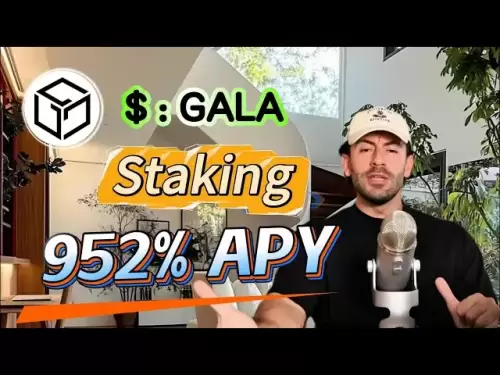-
 Bitcoin
Bitcoin $114500
-0.31% -
 Ethereum
Ethereum $3648
1.11% -
 XRP
XRP $3.033
-0.27% -
 Tether USDt
Tether USDt $0.9999
-0.01% -
 BNB
BNB $758.5
-0.32% -
 Solana
Solana $167.5
1.48% -
 USDC
USDC $0.9998
-0.02% -
 TRON
TRON $0.3331
0.74% -
 Dogecoin
Dogecoin $0.2039
0.25% -
 Cardano
Cardano $0.7419
-0.46% -
 Hyperliquid
Hyperliquid $39.21
2.66% -
 Stellar
Stellar $0.4049
-1.95% -
 Sui
Sui $3.483
-0.56% -
 Bitcoin Cash
Bitcoin Cash $570.8
2.89% -
 Chainlink
Chainlink $16.67
-0.57% -
 Hedera
Hedera $0.2470
-1.57% -
 Ethena USDe
Ethena USDe $1.001
0.00% -
 Avalanche
Avalanche $22.36
1.52% -
 Litecoin
Litecoin $123.4
4.35% -
 UNUS SED LEO
UNUS SED LEO $8.989
0.09% -
 Toncoin
Toncoin $3.324
-2.40% -
 Shiba Inu
Shiba Inu $0.00001219
-1.30% -
 Uniswap
Uniswap $9.811
2.54% -
 Polkadot
Polkadot $3.662
-0.07% -
 Monero
Monero $295.5
-3.85% -
 Dai
Dai $1.000
0.01% -
 Bitget Token
Bitget Token $4.345
0.24% -
 Cronos
Cronos $0.1380
0.95% -
 Pepe
Pepe $0.00001044
-1.14% -
 Ethena
Ethena $0.5981
-4.24%
How to read EMV near the gap? How do indicators react when filling the gap?
EMV near gaps indicates move strength; high EMV suggests strong volume, low indicates potential reversal. Use MAs, RSI, Bollinger Bands, and volume for informed crypto trading decisions.
May 25, 2025 at 11:50 pm
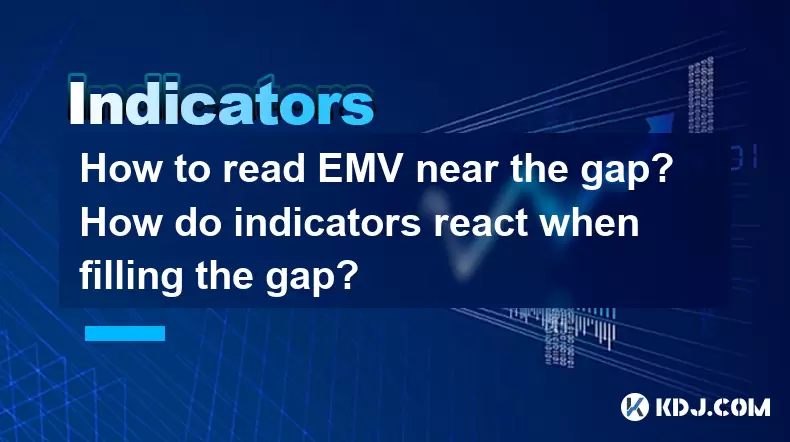
Understanding how to read EMV (Ease of Movement) near the gap and how indicators react when filling the gap is crucial for traders in the cryptocurrency market. This article will provide detailed insights into these concepts, helping you make more informed trading decisions.
What is EMV and Why It Matters Near the Gap
Ease of Movement (EMV) is a volume-based oscillator that measures the relationship between price change and volume. It helps traders identify how easily prices are moving. When it comes to gaps in the market, EMV can be particularly useful.
Near the gap, EMV can indicate the strength of the move. If the EMV is high near the gap, it suggests that the price movement is backed by strong volume, indicating a more significant move. Conversely, a low EMV near the gap might suggest that the move lacks volume support, potentially leading to a quicker reversal.
To read EMV near the gap, follow these steps:
- Identify the Gap: Look for a significant price gap on the chart, where the opening price of a new period is markedly different from the closing price of the previous period.
- Plot EMV: Add the EMV indicator to your chart. Most trading platforms will have this available in their indicator library.
- Observe EMV Values: Check the EMV values around the gap. A high positive EMV indicates ease of upward movement, while a high negative EMV indicates ease of downward movement.
- Compare with Volume: Compare the EMV values with the actual volume bars to confirm the strength of the move.
Indicators and Their Reactions When Filling the Gap
When a gap in the cryptocurrency market begins to fill, several indicators can help traders understand the dynamics at play. Here are some key indicators and their typical reactions:
Moving Averages
Moving averages (MAs) are widely used to smooth out price data and identify trends. When a gap starts to fill, moving averages can provide insights into the potential direction of the price.
- Short-term MAs: If the price crosses above a short-term MA (e.g., 20-day MA) while filling the gap, it might signal a bullish continuation. Conversely, if the price falls below the short-term MA, it could indicate a bearish continuation.
- Long-term MAs: If the price approaches or crosses a long-term MA (e.g., 50-day or 200-day MA) while filling the gap, it can indicate a significant trend change. A crossover above the long-term MA might suggest a bullish trend, while a crossover below might suggest a bearish trend.
Relative Strength Index (RSI)
The Relative Strength Index (RSI) is a momentum oscillator that measures the speed and change of price movements. It ranges from 0 to 100 and is often used to identify overbought or oversold conditions.
- Overbought/Oversold Levels: If the RSI is above 70 when filling the gap, it might suggest that the asset is overbought, and a reversal could be imminent. If the RSI is below 30, it might indicate an oversold condition, potentially signaling a bullish reversal.
- Divergence: If the RSI diverges from the price action while filling the gap (e.g., price makes a new high but RSI does not), it could signal a weakening trend and a potential reversal.
Bollinger Bands
Bollinger Bands consist of a middle band (usually a 20-day MA) and two outer bands that are standard deviations away from the middle band. They help identify volatility and potential price breakouts.
- Narrowing Bands: If the Bollinger Bands are narrowing while filling the gap, it might suggest decreasing volatility and a potential breakout. A subsequent expansion of the bands could indicate the direction of the breakout.
- Price Touching Bands: If the price touches the upper band while filling the gap, it might suggest overbought conditions. If it touches the lower band, it might indicate oversold conditions. A move back towards the middle band could signal a return to normal volatility.
Volume Indicators
Volume indicators such as the On-Balance Volume (OBV) and the Volume Weighted Average Price (VWAP) can provide insights into the strength of the move while filling the gap.
- OBV: If the OBV is rising while the gap is filling, it suggests that volume is supporting the price move, potentially indicating a strong trend. A falling OBV might suggest weakening volume and a potential reversal.
- VWAP: If the price is above the VWAP while filling the gap, it might suggest bullish sentiment. If the price is below the VWAP, it might indicate bearish sentiment. The VWAP can act as a dynamic support or resistance level.
Practical Example: Reading EMV and Indicators Near the Gap
To illustrate how to read EMV and other indicators near the gap, let's consider a practical example using a hypothetical cryptocurrency, CryptoX.
- Identify the Gap: On the chart of CryptoX, a gap appears between the closing price of $100 and the opening price of $110.
- Plot EMV: You add the EMV indicator to your chart and observe that the EMV value is high and positive near the gap, indicating strong upward movement with volume support.
- Observe Moving Averages: The price of CryptoX is above the 20-day and 50-day MAs, suggesting a bullish trend. As the gap starts to fill, the price remains above these MAs, reinforcing the bullish sentiment.
- Check RSI: The RSI is at 65, indicating that CryptoX is not yet overbought. There is no divergence between the RSI and the price, further supporting the bullish trend.
- Analyze Bollinger Bands: The Bollinger Bands are expanding, indicating increased volatility. The price is touching the upper band but not consistently, suggesting that while there might be overbought conditions, the trend remains strong.
- Monitor Volume Indicators: The OBV is rising, confirming the bullish trend with strong volume. The VWAP is below the current price, also supporting the bullish sentiment.
Using EMV and Indicators for Trading Decisions
Understanding how EMV and other indicators react near the gap can help you make more informed trading decisions. Here are some strategies to consider:
- Confirming Trends: Use EMV and other indicators to confirm the strength and direction of the trend near the gap. A high EMV value with supportive indicators can increase confidence in a trade.
- Identifying Reversals: Look for signs of weakening trends or potential reversals using indicators like RSI and OBV. A low EMV value near the gap, combined with bearish signals from other indicators, might suggest a potential reversal.
- Setting Entry and Exit Points: Use moving averages and Bollinger Bands to set entry and exit points. For example, entering a trade when the price crosses above a key MA and exiting when it touches the upper Bollinger Band.
- Managing Risk: Always consider the overall market context and use stop-loss orders to manage risk. Even with supportive indicators, market conditions can change rapidly.
Frequently Asked Questions
Q: Can EMV be used as a standalone indicator near the gap?
A: While EMV can provide valuable insights into the ease of price movement near the gap, it is generally more effective when used in conjunction with other indicators. Combining EMV with moving averages, RSI, Bollinger Bands, and volume indicators can provide a more comprehensive view of market dynamics.
Q: How reliable are indicators when filling the gap in highly volatile markets?
A: In highly volatile markets, indicators can be less reliable due to rapid price movements and increased noise. However, they can still provide useful insights if used cautiously. It's important to consider the broader market context and use multiple indicators to confirm signals.
Q: What should I do if multiple indicators give conflicting signals near the gap?
A: When multiple indicators give conflicting signals, it's essential to weigh the strength of each signal and consider the overall market context. Sometimes, one indicator might be more reliable than others in specific market conditions. It's also helpful to wait for more confirmation before making a trading decision.
Q: How can I improve my skills in reading EMV and other indicators near the gap?
A: Improving your skills requires practice and continuous learning. Start by analyzing historical charts to see how EMV and other indicators behaved near gaps in the past. Use demo accounts to practice trading based on these indicators. Additionally, stay updated with educational resources and market analysis to refine your understanding of these tools.
Disclaimer:info@kdj.com
The information provided is not trading advice. kdj.com does not assume any responsibility for any investments made based on the information provided in this article. Cryptocurrencies are highly volatile and it is highly recommended that you invest with caution after thorough research!
If you believe that the content used on this website infringes your copyright, please contact us immediately (info@kdj.com) and we will delete it promptly.
- Meme Coins Skyrocket: Is Dogecoin About to Be Dethroned?
- 2025-08-06 03:50:13
- Tether's On-Chain Surge: USDT Dominates and Drives Blockchain Fees
- 2025-08-06 02:50:13
- Bitcoin, Treasury, Country: Bolivia Follows El Salvador's Lead, While TON Strategy Co. Makes Waves
- 2025-08-06 03:50:13
- Succinct's PROVE Token & Mainnet Launch: A New Era for ZK Proofs
- 2025-08-06 02:50:13
- CEA Industries Rebrands as BNB Network Company: A New Era for BNB Treasury
- 2025-08-06 03:55:14
- Terra Classic's Market Module Revival: The v3.5.0 Upgrade and What It Means for LUNC
- 2025-08-06 02:30:12
Related knowledge
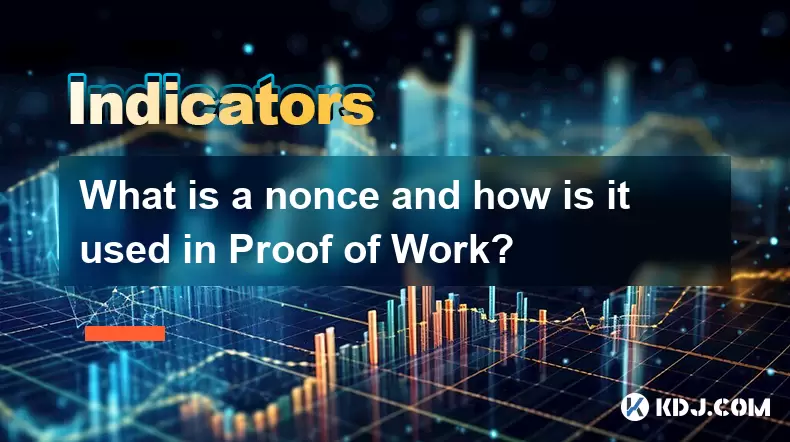
What is a nonce and how is it used in Proof of Work?
Aug 04,2025 at 11:50pm
Understanding the Concept of a Nonce in CryptographyA nonce is a number used only once in cryptographic communication. The term 'nonce' is derived fro...
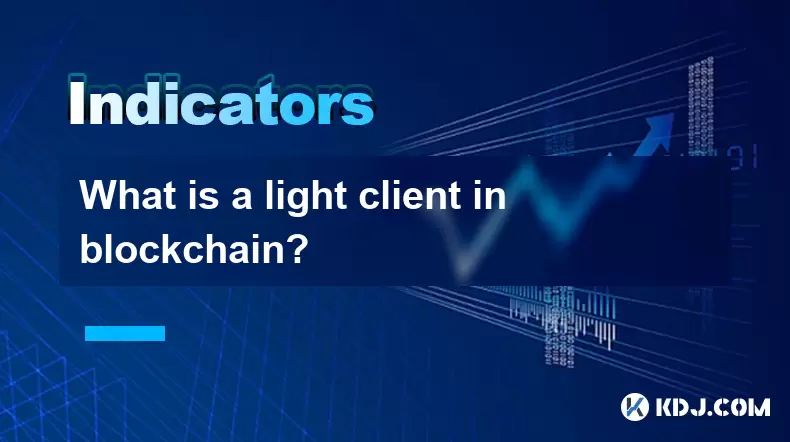
What is a light client in blockchain?
Aug 03,2025 at 10:21am
Understanding the Role of a Light Client in Blockchain NetworksA light client in blockchain refers to a type of node that interacts with the blockchai...
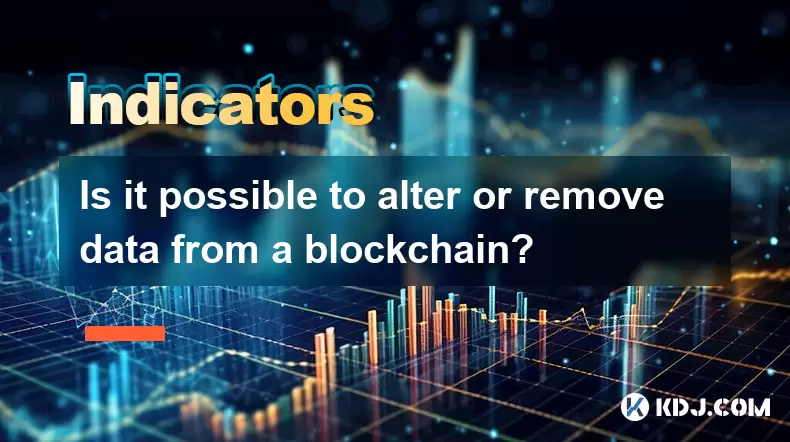
Is it possible to alter or remove data from a blockchain?
Aug 02,2025 at 03:42pm
Understanding the Immutable Nature of BlockchainBlockchain technology is fundamentally designed to ensure data integrity and transparency through its ...
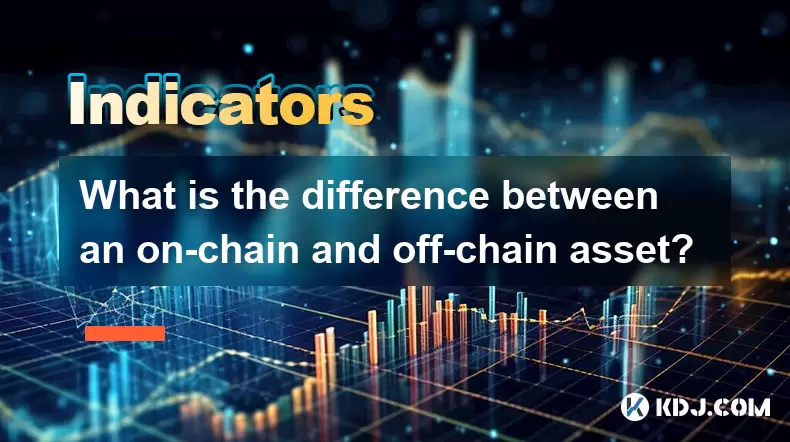
What is the difference between an on-chain and off-chain asset?
Aug 06,2025 at 01:42am
Understanding On-Chain AssetsOn-chain assets are digital assets that exist directly on a blockchain network. These assets are recorded, verified, and ...
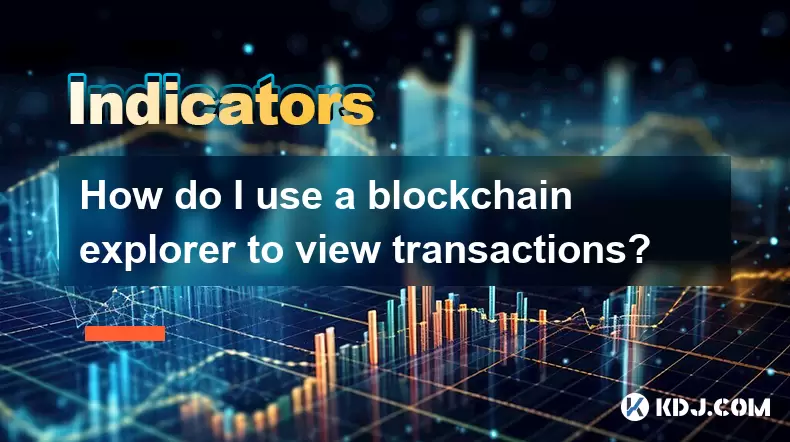
How do I use a blockchain explorer to view transactions?
Aug 02,2025 at 10:01pm
Understanding What a Blockchain Explorer IsA blockchain explorer is a web-based tool that allows users to view all transactions recorded on a blockcha...
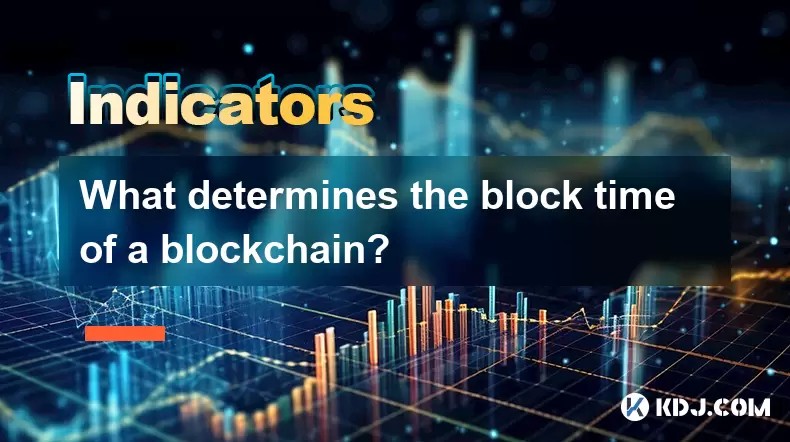
What determines the block time of a blockchain?
Aug 03,2025 at 07:01pm
Understanding Block Time in Blockchain NetworksBlock time refers to the average duration it takes for a new block to be added to a blockchain. This in...

What is a nonce and how is it used in Proof of Work?
Aug 04,2025 at 11:50pm
Understanding the Concept of a Nonce in CryptographyA nonce is a number used only once in cryptographic communication. The term 'nonce' is derived fro...

What is a light client in blockchain?
Aug 03,2025 at 10:21am
Understanding the Role of a Light Client in Blockchain NetworksA light client in blockchain refers to a type of node that interacts with the blockchai...

Is it possible to alter or remove data from a blockchain?
Aug 02,2025 at 03:42pm
Understanding the Immutable Nature of BlockchainBlockchain technology is fundamentally designed to ensure data integrity and transparency through its ...

What is the difference between an on-chain and off-chain asset?
Aug 06,2025 at 01:42am
Understanding On-Chain AssetsOn-chain assets are digital assets that exist directly on a blockchain network. These assets are recorded, verified, and ...

How do I use a blockchain explorer to view transactions?
Aug 02,2025 at 10:01pm
Understanding What a Blockchain Explorer IsA blockchain explorer is a web-based tool that allows users to view all transactions recorded on a blockcha...

What determines the block time of a blockchain?
Aug 03,2025 at 07:01pm
Understanding Block Time in Blockchain NetworksBlock time refers to the average duration it takes for a new block to be added to a blockchain. This in...
See all articles





















